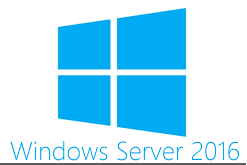- Support for the Software Defined Datacenter.
- Allows for a Hybrid datacenter to easily scale up compute resources using Azure VM instances. Multi-Tenancy, Software Defined Networking, VM Mobility, Shared Nothing Storage and other enhancements make it easy to seamlessly extend on premise resources to the cloud.
- Nano Server.
- Nano Server is a mini version of Windows Server core. It is headless (no GUI or cmd prompt), 93% smaller than the full installation of Windows Server, requires fewer patches and reboots. It is designed to run Cloud Infrastructure services and Cloud-based applications that run in VMs, containers or platforms that do not require a GUI.
- Containers.
- Windows Server 2016 will support Windows Server Containers and Hyper-V Containers. Containers isolate the application from the Operating System (OS). You can kind of think of it as the next generation of Application Virtualization. Separating the Application from the OS will simplify the deployment and reliability of applications running in Containers.
- Docker Support
- Originally built for Linux, Windows Server 2016 will support Dockers. Dockers is an open source engine that will be used to run, build and manage containers.
- Nested Hyper-V Hypervisors.
- You can now run a Hyper-V Hypervisor within another Hyper-V Hypervisor. Nested Hyper-V Hypervisors are a requirement for Containers.
- Rolling Upgrades for Hyper-V and Storage Clusters
- You can introduce a Windows Server 2016 Hyper-V Host into a Hyper-V Cluster that is running Windows Server 2012 R2 Hyper-V hosts without having to upgrade the existing hosts first. The cluster will continue to run at Windows Server 2012 R2 Functional Level until all of the nodes are upgraded. Mixed node clusters must be managed from a Windows Server 2016 or Windows 10 computer.
- Storage Replica.
- Supports Synchronous replication which can write data to two or more locations before the write is complete. Replicate data at the block level. Works best with 10GB networks with latency under 5ms.
- Storage Spaces Direct.
- Grant access to cluster storage to servers not in the cluster and use allow a cluster to use SAS connected Just a Bunch of Disks (JBOD) storage .
- Shielded VMs.
- Bitlocker drive encryption with a Virtual Trusted Platform Module (vTPM), encrypted Live Migration and optionally restrict console access, PowerShell Direct and other VM integration services from a user with administrative priveleges to the VM.
- Hot Add and Remove of Memory and Network Adapters in a Hyper-V VM while it is running.
New Features in Windows Server 2016

Tags: Servers
